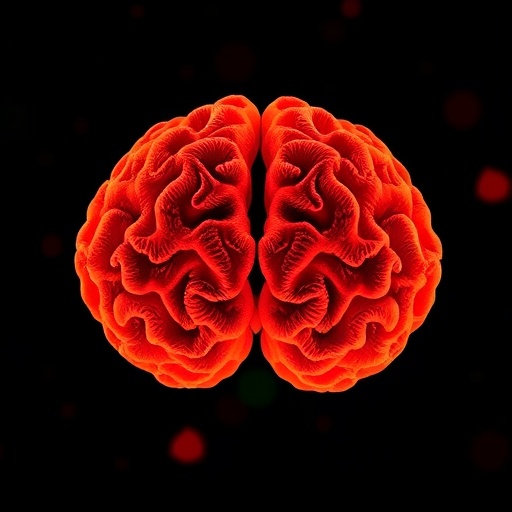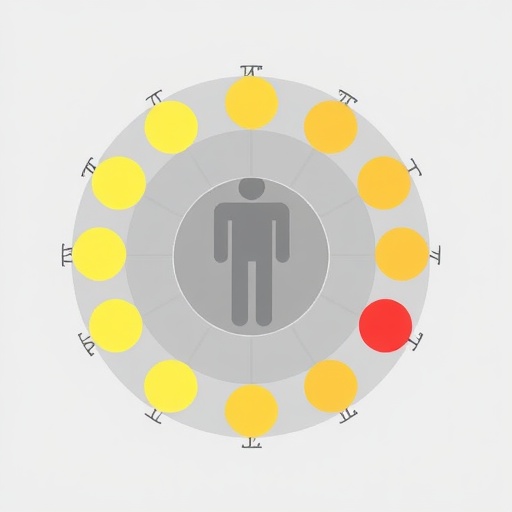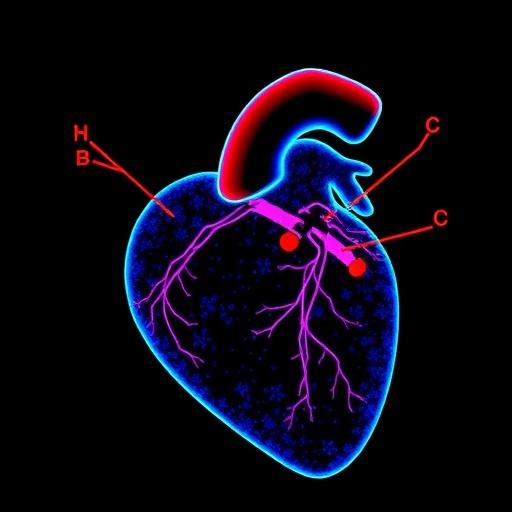
In the intricate landscape of neural decision-making, dopamine signaling within the nucleus accumbens has long been recognized as a pivotal player. Traditionally, neuroscientific models have tended to compartmentalize decision-making as a series of discrete, uniform steps—evaluations that culminate straightforwardly in predictable outcomes. However, recent research is challenging this paradigm, unveiling decision-making as an ongoing, fluid process that involves continuous evaluation and re-evaluation of choices. This new perspective not only enriches our understanding of the temporal dynamics in decision-making but also deepens the mystery surrounding dopamine’s regulatory role, especially within the mesolimbic pathway.
A groundbreaking study published in Nature Neuroscience by Kocharian, Redish, and Rothwell provides critical insights into these complexities. By employing an elegant economic foraging task in mice—a task designed to mimic real-world decision-making in a laboratory setting—the authors discovered that dopamine dynamics in the nucleus accumbens core do not merely encode reward prediction errors, as previously emphasized. Instead, they reflect more nuanced internal states, such as decision confidence during initial evaluation as well as the integration of past experiences and anticipated future outcomes during ongoing re-evaluations. This nuanced interplay uncovers a richer tapestry of how dopamine mediates volitional, self-guided decisions with a temporal depth previously underappreciated.
The nucleus accumbens (NAc), situated in the ventral striatum, is a hub of mesolimbic dopamine innervation and is fundamentally implicated in reward processing, motivation, and reinforcement learning. Historically, models have simplified dopamine’s role to signaling discrepancies between expected and received rewards—so-called reward prediction errors. Yet, these classical models often overlook the continuous internal deliberations and fluctuating confidence that govern behavioral flexibility. The new findings argue that dopamine signals within the NAc core incorporate a multi-dimensional encoding scheme, extending beyond binary outcome expectations to fine-grained assessments of decision reliability and adaptability.
.adsslot_VumBWZzojk{width:728px !important;height:90px !important;}
@media(max-width:1199px){ .adsslot_VumBWZzojk{width:468px !important;height:60px !important;}
}
@media(max-width:767px){ .adsslot_VumBWZzojk{width:320px !important;height:50px !important;}
}
ADVERTISEMENT
The experimental paradigm designed by Kocharian and colleagues involved training mice in an economic foraging task that required them to assess variable reward contingencies and make complex, self-guided choices over extended periods. By utilizing fiber photometry to record dopamine activity in the NAc core, the researchers captured real-time neurochemical dynamics linked to both the initiation and adjustment of decisions. Remarkably, dopamine transients were not static; they evolved dynamically as the animals accumulated new information, constantly evaluating and re-evaluating the contingencies before and after committing to a choice.
One of the most compelling revelations from this study is the correlation between dopamine fluctuations and decision confidence. Dopamine release appeared to heighten during phases when the mice exhibited greater certainty about their choices, suggesting that confidence itself—an intrinsically subjective psychological state—is encoded at the neurochemical level. Furthermore, this neurochemical signature was distinct from classical reward prediction signals, implicating dopamine in encoding internal meta-evaluations of choice quality rather than merely external outcome expectations.
Beyond initial evaluation, dopamine dynamics also mirrored processes underlying change-of-mind episodes. Often in decision scenarios, evidence accumulated after a choice can prompt reconsideration and behavioral adjustment. The study revealed that during these re-evaluation phases, dopamine levels in the NAc core reflected integrated information from past experiences as well as anticipated future values, effectively operating as a neural substrate for flexible decision updates. This real-time neurochemical modulation enables the organism to adapt its choices in response to new environmental contingencies, highlighting dopamine’s pivotal role in behavioral flexibility.
Noteworthily, the authors conducted precise optogenetic manipulations targeting mesolimbic dopamine neurons and their release in the NAc. This allowed causal inference about dopamine’s involvement in decision-making stages. Their findings showed that artificially enhancing dopamine release selectively influenced the evaluation and re-evaluation phases of choice behavior, but only in mice whose natural dopamine dynamics already correlated with future value processing. This selective effect underscores how individual differences in dopamine signaling patterns can shape the susceptibility of decision mechanisms to neuromodulation, a nuance that has been largely ignored in the literature.
Intriguingly, these results challenge the prevailing homogenized views of dopamine function by highlighting inter-individual variability. The study points toward a model wherein individual differences in the neural representation of value and confidence modulate how dopamine influences decision-making strategies. This discovery has crucial implications for understanding neuropsychiatric conditions marked by impaired decision-making and dopaminergic dysfunction, such as addiction, schizophrenia, and obsessive-compulsive disorder, suggesting potential personalized therapeutic targets.
Moreover, the research posits that the dopamine system’s role is not confined to facilitating immediate reward learning but extends to encoding temporal horizons of value—integrating retrospective and prospective evaluations. Such a framework aligns with broader theories in reinforcement learning that incorporate constructs like model-based planning and hierarchical decision processes, bridging computational neuroscience with empirical neurobiology at the molecular signaling level.
The study’s utilization of cutting-edge technologies like fiber photometry combined with sophisticated behavioral assays exemplifies a new era of systems neuroscience, wherein continuous neurochemical measurements can be longitudinally related to complex behavioral states. This methodological advance allows a more thorough parsing of dopamine’s diverse roles—not just as a reward error signal but as a multi-dimensional modulator of choice confidence, uncertainty, and behavioral flexibility over ambivalent temporal frames.
Furthermore, this work invites reconsideration of how reward-related neuromodulatory systems operate under naturalistic conditions, where animals (and humans) rarely make isolated, static choices. Instead, decision-making unfolds as an adaptive, dynamic process susceptible to ongoing reassessment. Mesolimbic dopamine’s fluctuating activity patterns render it well suited to underpin this fluid computational architecture, continuously biasing and refining decisions based on evolving internal and external information flows.
At a broader level, the findings align with emerging psychological theories that conceptualize confidence as a critical parameter in decision-making strategies, one that modulates exploration-exploitation tradeoffs and promotes adaptive foraging behaviors. Encoding decision confidence at a neurochemical level represents a fundamental neurobiological mechanism by which organisms calibrate their choices under uncertainty, ultimately shaping survival and fitness.
This increasingly intricate picture of dopamine signaling also has significant implications for artificial intelligence and machine learning. By elucidating how biological systems implement continuous valuation and confidence encoding, such insights can inspire novel algorithms that better mimic naturalistic decision-making dynamics. These bi-directional translational ties highlight how deepening neuroscientific understanding can catalyze innovation across technology and medicine.
Finally, the study by Kocharian and colleagues opens exciting avenues for future research. Follow-up investigations could seek to dissect the circuit-level interactions between dopamine and glutamatergic or GABAergic systems during evaluation and re-evaluation phases. Additionally, exploring how these dopamine-dependent processes differ across brain regions or in disease models may yield crucial clues for therapeutics. Importantly, expanding such paradigms into primate models and human studies will be essential to fully unravel the role of dopamine in shaping the rich tapestry of volitional choice and cognitive flexibility.
In summary, this transformative research redefines mesolimbic dopamine’s role beyond a simple reward error messenger to a versatile neural currency encoding decision confidence, historical context, and future value estimations. By embracing decision-making as a fluid, continuous process and incorporating individual variability, these insights pave the way for a more nuanced understanding of how the brain navigates the immense complexity of choice.
Subject of Research: Neural mechanisms of decision-making focusing on mesolimbic dopamine signaling in the nucleus accumbens and its role in encoding decision confidence and change-of-mind dynamics.
Article Title: Individual differences in decision-making shape how mesolimbic dopamine regulates choice confidence and change-of-mind.
Article References:
Kocharian, A., Redish, A.D. & Rothwell, P.E. Individual differences in decision-making shape how mesolimbic dopamine regulates choice confidence and change-of-mind. Nat Neurosci (2025). https://doi.org/10.1038/s41593-025-02015-z
Image Credits: AI Generated
Tags: confidence in choicesdopamine signaling and decision-makingeconomic foraging tasks in neuroscienceimplications of dopamine researchinternal states of decision-makingmesolimbic pathway and behaviorneural mechanisms of choicenucleus accumbens and reward predictionre-evaluation of choicestemporal dynamics in decision-makingvolitional decision-making processes





